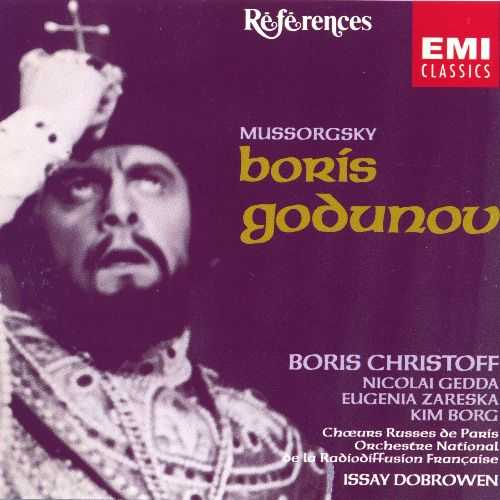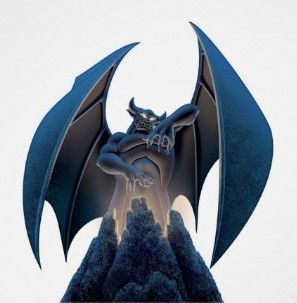
Mussorgsky was initially heavily criticized and considered an eccentric both in the west and by colleagues in Russia. It was not until after the success of "Boris Godunov" that reception warmed significantly. "Boris Godunov", however, was his second tone poem -- one of the first of Russian composition -- and not the first, although it remains his only completed opera.


The first edition, sharing the title above, was originally envisioned in 1867. It, like later incarnations, was based on the idea of a witches' sabbath happening on St. John's Night, also Kupala Night. Chernobog, which translates to "Black God", is a devil-like figure present in Slavic mythology. Mussorgsky's mentor, Balakirev, was savagely critical of the piece, and it was never heard until manuscripts were discovered in the 20th century. This is not the version most listeners are familiar with.
The second version was known as "Glorification of Chernobog (Славленье Чёрнобога)" and "Worship of the Black Goat (Служение чёрному козлу)." This was to be a part of the opera Mlada. Ultimately, the collaborative project of Mlada was never completed. Unlike the first version, no manuscripts survive of this edition, and it was never performed.
The third version, Dream Vision of the Peasant Lad Сонное видение паробка, was partly based in the reworked composition of the second version. It was to function as a dream intermezzo for the uncompleted opera The Fair at Sorochynsti. The opera was posthumously completed, and this version, although unpopular, was performed in 1931. It is the only version with vocals.
The version most people are familiar with (although not entirely the Disney's Fantasia version) is Rimsky-Korsakov's edition, which was constructed based on portions of the first and third edition, along with his own personal touch. However, he had no original copy of the original tone poem.
Rimsky-Korsakov wrote,
"During the season of 1882-3, I continued working on Khovanshchina and other compositions of Mussorgsky's. A Night on the Bare Mountain was the only thing I could not find my way with. Originally composed in the sixties under the influence of Liszt's Danse Macabre for the piano with accompaniment of orchestra, this piece (then called St. John's Eve, and both severely and justly criticized by Balakirev) had long been utterly neglected by its author, gathering dust among his unfinished works. When composing Gedeonov's Mlada, Mussorgsky had made use of the material to be found in Night, and, introducing singing into it, had written the scene of Chernobog on Mount Triglav.
That was the second form of the same piece in substance. Its third form had developed in his composing of The Fair at Sorochyntsi, when Mussorgsky conceived the queer and incoherent idea of making the peasant lad, without rhyme or reason, see the sabbath of devilry in a dream, which was to form a sort of stage intermezzo that did not chime at all with the rest of the scenario of The Fair at Sorochyntsi.This time the piece ended with the ringing of the village church bell,
at the sounds of which the frightened evil spirits vanished. Tranquility
and dawn were built on the theme of the peasant lad himself, who had
seen the fantastic dream. In working on Mussorgsky's piece, I made use
of its last version for the purpose of closing the composition. Now
then, the first form of the piece was for piano solo with orchestra; the
second form and the third, vocal compositions and for the stage, into
the bargain (unorchestrated). None of these forms was fit to be
published and performed.
With Mussorgsky's material as a basis, I
decided to create an instrumental piece by retaining all of the author's
best and coherent material, adding the fewest possible interpolations
of my own. It was necessary to create a form in which Mussorgsky's ideas
would mould in the best fashion. It was a difficult task, of which the
satisfactory solution baffled me for two years, though in the other
works of Mussorgsky I had got on with comparative ease"
This version was completed in 1886, and remains the favored version.
Lastly, Leopold Stokowski specially arranged a version based in part on Rimsky-Korsakov's version, with the most significant change being an absence of fanfare upon the arrival of Chernobog. This is the Fantasia edition.

Fantasia's stylized edition of Chernobog, "Chernabog"
No comments:
Post a Comment